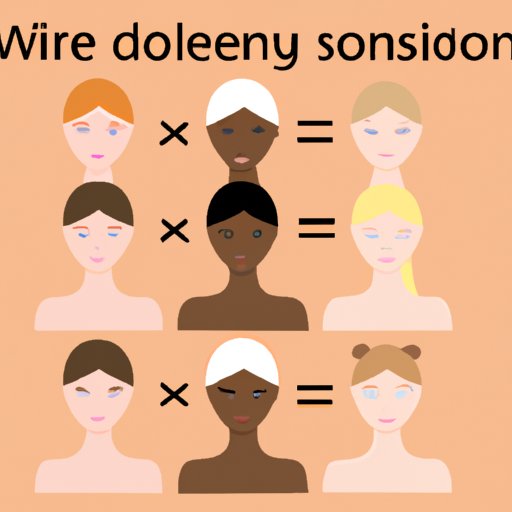Introduction
Skin tone is an important part of our identity and can vary greatly from person to person. Understanding your own skin tone and those of others is essential for recognizing differences in appearance and appreciating diversity. This article will explore the different types of skin tones and explain how to identify your own. We will also look at the role of genetics in determining skin tone and how this impacts beauty standards around the world.
Exploring the Different Skin Tones: What Skin Tone Am I?
When thinking about skin tone, it is important to first understand the two main components that determine a person’s complexion: pigment and melanin. Pigment is the natural color of the skin and is determined by the amount of melanin present. Melanin is produced by cells in the skin called melanocytes and is responsible for giving skin its particular hue.
The most common way to identify skin tone is by using the Fitzpatrick scale, which was developed in 1975 by Harvard dermatologist Thomas Fitzpatrick. This scale divides skin into six categories based on pigment and melanin levels. The categories range from very fair (type 1) to extremely dark (type 6). Your skin tone can be further identified by looking at its undertones, which are the warmer or cooler hues that are visible beneath the surface color.
To figure out what skin tone you have, you can start by taking a look at your natural complexion. Consider the color of your skin in both natural and artificial light and compare it to the descriptions of the Fitzpatrick scale. Additionally, take note of any undertones you may have. Does your skin look more yellow, pink, or olive? Once you have identified your skin tone, you can then begin to shop for makeup and skincare products specifically tailored to your needs.
Genetics and Skin Tone
It is important to recognize that skin tone is largely determined by genetics. Research has found that certain genes are associated with different skin pigmentation levels, and these genetic variations can be passed down through generations. For example, the gene MC1R is linked to lighter skin tones, while the gene SLC24A5 is associated with darker skin tones.
In addition to genetics, environmental factors such as sunlight exposure and diet can also play a role in determining skin tone. Sunlight triggers the production of melanin in the skin, which can lead to darker complexions over time. Similarly, diets high in carotenoids (which are found in fruits and vegetables) can cause the skin to appear more yellow or orange in color.
Skin Tone and Beauty Standards
Skin tone has long been used as a metric for beauty standards around the world. Historically, lighter skin tones have been held in higher regard than darker ones, and this has led to the development of colorism—a form of discrimination based on skin color. As a result, many people with darker skin tones have experienced prejudice and exclusion due to their complexion.
It is important to recognize and appreciate the beauty of all skin tones. Everyone deserves to feel confident and comfortable in their own skin, regardless of its shade. By understanding and celebrating diversity, we can help create a more inclusive society where everyone is accepted and respected for who they are.
Conclusion
In conclusion, skin tone is an important aspect of our identity that can vary greatly from person to person. There are six main categories of skin tone according to the Fitzpatrick scale, and these can be further distinguished by their undertones. Genetics is largely responsible for determining skin tone, although environmental factors can also have an influence. Finally, it is important to recognize and appreciate the beauty of all skin tones and celebrate diversity in our society.


